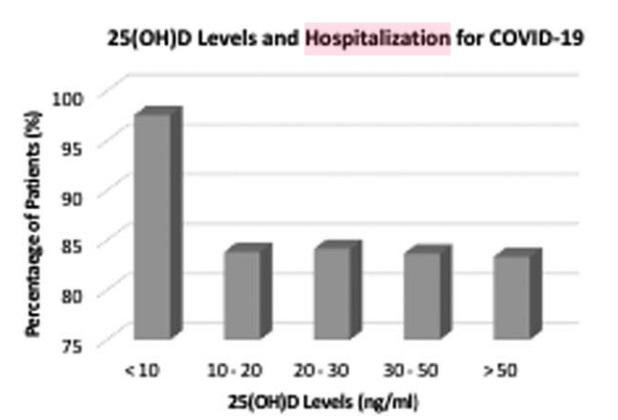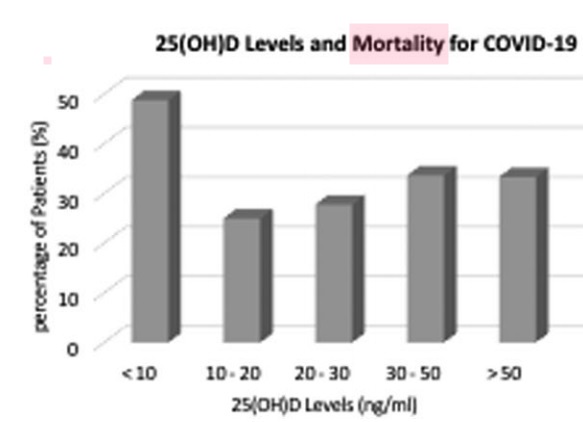Low vitamin D associated with COVID-19 problems in NYC hospitals
An Evaluation of Serum 25-Hydroxy Vitamin D Levels in Patients with COVID-19 in New York City
J Am Coll Nutr. 2021 Feb 19;1-6. doi: 10.1080/07315724.2020.1869626
Elizabeth Marie Gavioli 1 2, Hirotaka Miyashita 2, Omar Hassaneen 1, Evan Siau 2 3
📄 Download the PDF from VitaminDWiki

NOTE: The Y axis does not go from 0 to 100%, but rather 75% to 100%


Aim: Deterioration of patients from COVID-19 is associated with cytokine release syndrome attributed to an elevation in pro-inflammatory cytokines. Vitamin D reduces proinflammatory cytokines, and has the possibility of reducing complications from respiratory tract illnesses.
Method: This was a retrospective, observational, cohort study of patients with COVID-19 disease within a New York City Health System. Adult patients were included if they tested positive for SARS-CoV-2, and had a serum 25-hydroxy vitamin D level (25(OH)D) within the three previous months prior to their detected SARS-CoV-2 test. Patients were compared and evaluated based upon their 25(OH)D levels. The primary endpoints were hospitalization, need for oxygen support, and 90-day mortality.
Results: 437 COVID-19 patients were included [67 (IQR: 56-79) years] within this cohort. Deficient plasma 25(OH)D levels (<20 ng/ml) were associated with an increased likelihood of oxygen support [ OR:2.23 (95% CI: 1.46-3.44, p = 0.0002)] from COVID-19. Deficient plasma 25(OH)D levels were not independently associated with 90-day mortality or risk of hospitalization. Hospitalization rates (98%), oxygen support (93%), and mortality rates (49%) were highest in patients who had 25(OH)D levels less than 10 ng/ml when compared to other 25(OH)D levels.
Conclusion: Serum 25-hydroxy vitamin D levels may affect the need for oxygen support therapy in patients with COVID-19.
